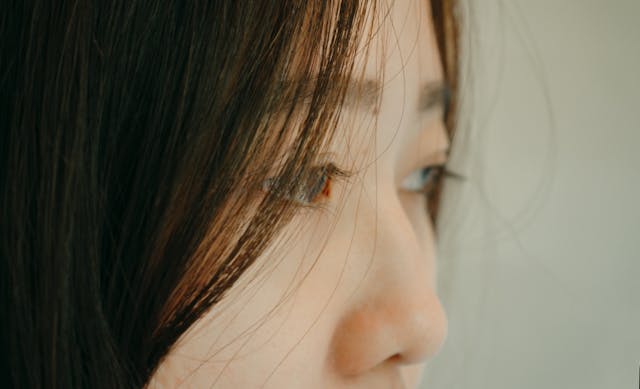Rhinoplasty surgery has cosmetic and functional benefits, making it one of the most complex procedures in plastic surgery. Revision rhinoplasty can be even more intricate because it requires a skilled surgeon like Dr. Jeffrey Schmidt to account for the alterations made during the initial surgery, improving on previous results while addressing new concerns that have emerged since then.
If you’re unhappy with the results of your original rhinoplasty, educating yourself on what to expect the second time around will prepare you for surgery and recovery.
What Makes Revision Rhinoplasty More Complex Than Primary Rhinoplasty?
Revision rhinoplasty tends to be more challenging than primary rhinoplasty for several reasons, so this procedure requires an expert approach and refined techniques. Surgeons face several unique challenges with revision nose surgery.
- Altered anatomy: Scar tissue, weakened cartilage, and altered nasal proportions can all complicate the surgical process.
- Limited resources: It becomes harder to adequately address your aesthetic and functional concerns if your previous surgeon removed too much cartilage or tissue.
- Patient expectations: Revision rhinoplasty patients often come to their consultations with more detailed goals in mind. Dr. Schmidt will take time to explain what you can realistically and safely expect to accomplish.
These factors make revision nose surgery much more demanding than primary rhinoplasty. Choosing a surgeon with ample experience and a specialized focus on facial procedures will ensure the best possible outcomes.
How Do the Goals of Revision Rhinoplasty Differ From the Initial Procedure?
You might need a secondary rhinoplasty after your first surgery to correct complications or unsatisfactory outcomes created by a less experienced surgeon.
Aesthetic concerns like asymmetry, overcorrection, and undercorrection are the most common patient motivations for revision rhinoplasty surgery. However, some patients also experience breathing problems or obstructed airflow if their primary rhinoplasty damaged the delicate structures inside the nose.
It also takes time for your nose to fully heal from primary rhinoplasty. As the swelling goes down and your nose settles into its new shape, you may notice opportunities for additional improvements and adjustments to achieve your ideal look. Some patients choose further refinements and enhancements to align with their changing goals after their first surgery.
How Does Recovery From Revision Rhinoplasty Compare to the First Surgery?
Healing from a secondary rhinoplasty may be slightly longer compared to the primary surgery. Surgically altering cartilage and tissues a second time can prolong the swelling, requiring your body to adapt. Fortunately, advancements in surgical techniques and technology have helped minimize downtime for many patients undergoing revision procedures.
Can Revision Rhinoplasty Offer Better Results Than the First Procedure?
Success in revision surgery depends on multiple factors, including your surgeon’s expertise. Experienced revision rhinoplasty providers can typically address issues more effectively than in the initial surgery. Additionally, many secondary rhinoplasty patients are better informed and now have a more detailed vision for what they want to achieve compared to their first surgery. Improved patient-surgeon communication can lead to better alignment of expectations and goals, resulting in a more satisfactory outcome.
Revision rhinoplasty also allows Dr. Schmidt to address any cosmetic or functional issues that may have arisen since the original surgery. This comprehensive approach can lead to a more refined and harmonious result that better meets your expectations and enhances your quality of life.
How Do Surgical Techniques Vary Between Revision and Primary Rhinoplasty?
Surgical skill, finesse, and attention to detail are paramount to tailor a revision rhinoplasty to your specifications. Since scar tissue from your earlier surgery can make the procedure more challenging, Dr. Schmidt may need to reconstruct or reinforce your nasal structures with methods like cartilage grafting to achieve a better result.
If you have new or worsening breathing difficulties since the primary surgery, Dr. Schmidt must address them during your revision with a combination of approaches tailored to your nasal anatomy – including septoplasty or turbinate reduction.
Are There Additional Risks Associated With Undergoing Revision Rhinoplasty?
All surgery carries some degree of risk, including infection, excessive bleeding, and poor wound healing. As a double board-certified plastic surgeon, Dr. Schmidt takes every step to inform patients about the potential complications of revision rhinoplasty. He also upholds high safety standards, and he and his team can arrange for a nurse or postoperative care technician to stay with you while you recover.
How Often Is Revision Rhinoplasty Successful in Addressing Initial Concerns?
Refining your nose’s structure, shape, and size can help you achieve a more balanced and harmonious appearance. Dr. Schmidt will also plan your surgery to address breathing difficulties like nasal obstructions. If you are unhappy with your original rhinoplasty, you can partner with one of Denver’s most experienced surgeons to improve your appearance and quality of life.
Get Your Perfect Profile With Revision Rhinoplasty in Denver
Dr. Schmidt has made facial plastic surgery the sole focus of his career, dedicating his practice to cosmetic and reconstructive procedures. He and his staff prioritize patient satisfaction with concierge services and personalized attention. As an accomplished ear, nose, and throat surgeon who has also mastered reconstructive techniques, Dr. Schmidt can address multiple concerns while improving and rebalancing your natural contours.
Though revision rhinoplasty presents unique challenges, Dr. Schmidt is up to the task of planning and executing a successful surgery. Schedule your consultation today by reaching out online or by calling 1 (720) 443-2235 today and put your care into the best possible hands.




